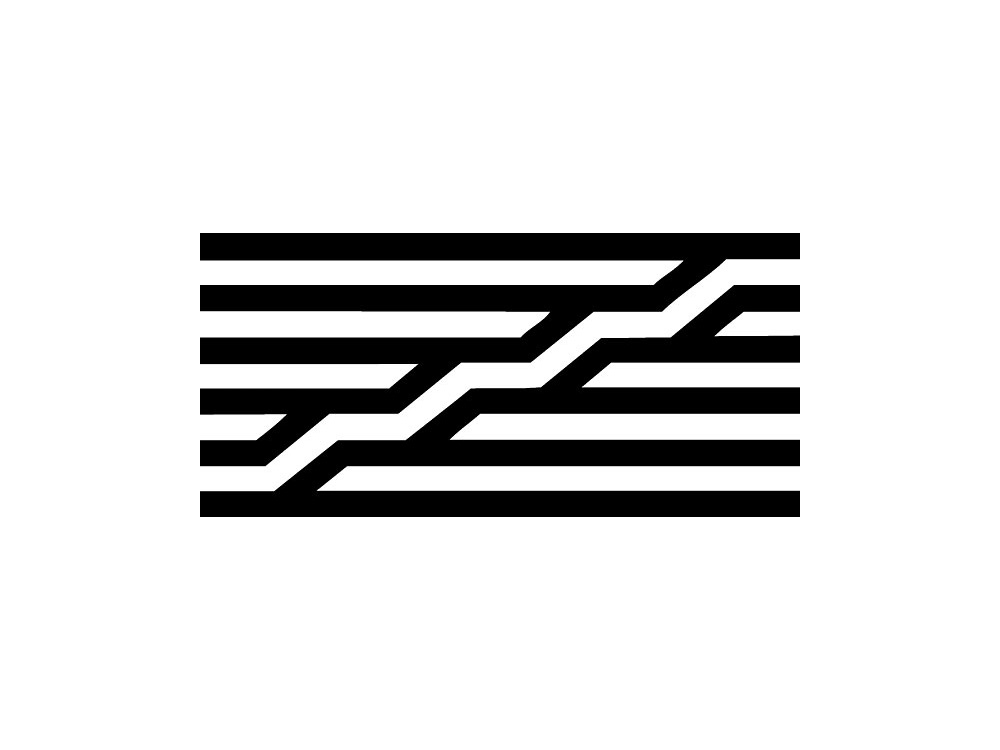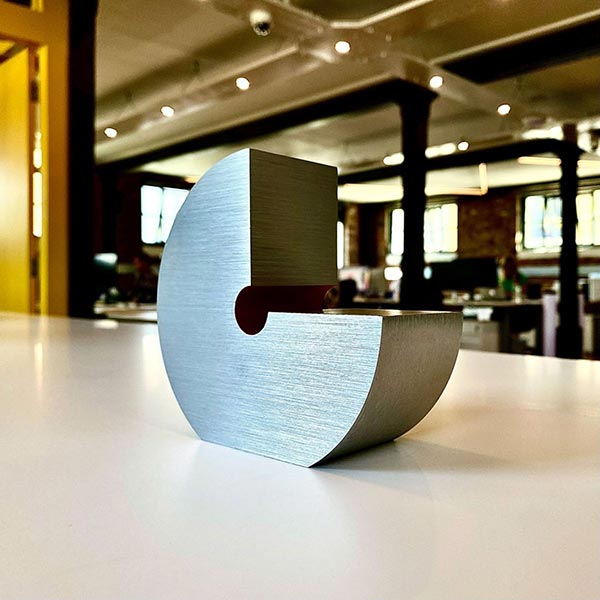According to designboom, Loewy “proposed ‘exxon’ and came up with seventy-six rough pencil sketches based on the word, placing the visual emphasis on the double ‘x.’ The two x’s subliminally recalled the ‘s’s’ in Esso and thus helped ease the transition from the old name to the new.”
The Library of Congress shared this look inside Loewy’s sketchbook.

“The sheet shows the trials and rejections as Loewy created a new logo for Standard Oil Company. From the eighteen design ideas on the page, Loewy highlighted his final choice with an ‘okay.’”
The date says 1966, but the name wasn’t officially changed to Exxon until 1972.
Catch the full logo history on the ExxonMobile website.
Loewy also designed the 1971 Shell logo that’s still in use today.
In more recent news, ExxonMobil is suing FX Networks over a new interlocking XX logo.





Comments
Wow its pretty great to see how exxon logo came about. I had no idea there was a company that was before exxon. I thought exxon came about when the government broke up standard oil’s monoply.
The xx is actually a Knights Templar symbol. The cross of Loraine.
I can’t remember where, but somewhere I read a story that a woman at a party asked the Exxon designer (Loewy, presumably) why he put two XXs in the name.
‘Why do you ask?’ said Loewy.
‘I just happened to notice it,’ replied the woman.
‘That’s why I did it,’ said Loewy.
Have you heard that story? Any idea if it’s true? Either way, it’s a neat little branding anecdote.
No idea, Mike. Nice story, though.
I still believe that the owners chose Loewy as the designer because of their common bond as Masons and that the linked x’s represent the Cross of Lorraine. Looking at some of his rejected design’s only fortifies this belief as two of them show the x’s as the square and compass.
Very keen as this is often done in the past among travellers.
The anecdote that Mike is referring to appears in the book BRAND IDENTITY NOW published in 2009 by Taschen in a section written by John Rushworth.
Thanks Ganix! Good to know I’m not making it up.
As far as I am aware Exxon has never existed in the UK, I have only ever seen Esso. So I always figured it was just different brand names for different countries or that Exxon purchased Esso. Wasn’t sure how Mobil linked into the whole thing either. Wonder why the trademark was restricted?
It’s because ESSO is the phonetic spelling of the original Standard Oil initials ‘S.O.’ ESSO is still used everywhere else but the United States. As per the restriction I’m not too sure. When the original Standard Oil was broken up, the New Jersey subsidiary owned the trademark and couldn’t use it in the other parts of the United States where the separate Standard Oil companies like Standard Oil of Indiana (Amoco) and Standard Oil of California (Chevron) were operating.
Although as recently as 2018, Exxon asked a court to throw out the original restriction against ESSO as BP now owned Amoco and Chevron as its own company now. Apparently it succeeded, so ESSO may someday make a comeback in the US. Mobil was Standard Oil of New York and they merged with Exxon in 1999. So really the original 1911 anti-trust breakup was for naught.
According to Scott Wolter, Loewy was a francmason who designed the famous oil company’s logo with two exxes combined in a way to simulate the Lorraine Cross, a symbol of the Templar Knights. I think this might be a simple speculation coming from the brain of the man who claims there were francmason Jewish templars in Tucson AZ who used lead swords with fake latin inscriptions.
With the bust up of the monopoly of Standard Oil early in the 20th Century, their products and branding went under several names/companies.
Esso (a beautiful oval logo) was in use basically in the East and Northeast. Enco (the Esso logo spelled E, N, C, O) was used in the Deep South and on the West coast. There were other incarnation names in other parts of the country such as Humble, Carter, and even Oklahoma. Most were oval with a very deep blue border on a white field with red lettering.
I can’t recall the reasoning (had all the anti-trust bugs been worked out?) in the 1960’s when this top secret re-branding under one name came about. Personally, I liked the new Esso logo which was introduced in the 1960’s, but nobody asked me! LOL! For some reason they had to come up with a brand new name and trademark.
And Exxon went to the very top with Raymond Loewy, a phenomenal designer who put his stamp on so many products. It’s not surprising that it took from 1966 until the Exxon name and logo were put into use in 1972. A major logo and name change such as “Exxon” is not implemented overnight.
Exxon merged with Mobil (I think they bought them sometime about 20-25 years ago) and the “Exxon” name in the newly formed “ExxonMobil” company borrowed more from the “Mobil” typeface with lower case letters than the all caps in Loewy’s Exxon. But the distinctive double X’s were kept.
But, what about the old red, white, blue, oval with HUMBLE inside it. When was it “first” used by Humble? And, when was that discontinued?
And at what time was the old solid white “HUMBLE” logo being used on the side of oil tank cars, that were painted black or dark grey?
Here’s why use of the “Esso” name was problem. Exxon, Mobil, Amoco, Chevron, and an assortment of other companies were all split from what had been Standard Oil (which the federal government broke up in 1911). Each company had the right to use the “Standard” brand name, but only in its home territory.
Standard Oil of New Jersey came up with the brand name “Esso” as play on the initials S.O. —as in Standard Oil. The company wanted to expand “Esso” nationally, but other “baby Standards”—particularly Standard Oil of Indiana (Amoco)—successfully argued that the name was a thinly veiled infringement on their rights to the name Standard Oil and the initials S.O. As a result, Standard Oil of New Jersey used a patchwork of other names (Humble, Carter, Enco) elsewhere in the country. To combine all marketing efforts under a single, national identity, the company had only one choice: Drop the well-known Esso name and create something that could be used without restriction.
The other Standards had “home” and “away” names, too. Standard Oil of California was known as Chevron outside of its home territory. Out of the upper Midwest, Standard of Indiana was Amoco. Eventually, they all decided that their 50-state-legal “away” names were more valuable than “Standard”.
Has anyone else noticed that the Exxon logo is the freemasons Lorraine cross and it is believed that Raymond Loewy was rumoured to have been a freemason?
Yes, some time ago, but never actually took time to look into the story of it.
I still can’t believe no one has ever associated the logo as being a car’s gas gauge with the lines going through the needle pointing to empty. Saying: XX on empty. The blue line at the bottom is the lower portion of the gauge and if the logo was spread out there would be a “F” on the far right, meaning if your car is on empty “fill up.” Just an observation.
That’s interesting, good catch. Funny how you see things your whole life and never relook at anything.
I had read that after considering using Enco (the name of one of their subsidiaries), and discovering that it meant “stalled car” in Japanese, they tried to find a way to avoid having that problem with names in other languages.
With that in mind, once they discovered that only Maltese used double Xs, that made things a lot easier to check.
I also read that they had originally considered Exon, to keep a four-letter name, but that was the name of a sitting governor at the time, so they decided against it. Exon probably would’ve raised objections from Sohio, which had previously vetoed the use of Enco in its territory as being too close to Esso.
I bet the house that the founders or major stock holders of Exxon once were, or still are, freemasons to date.
It’s all linked to the “Knights Templar” and the Knights Templar (OKA freemasons) know how to invest their money.
Interesting thoughts on a very simple equation. It does work though so I thank Mr Loewy for his contribution.